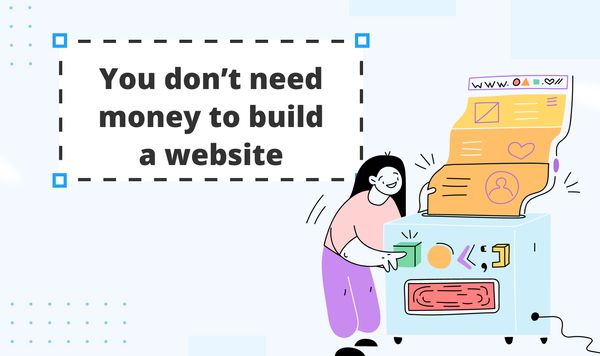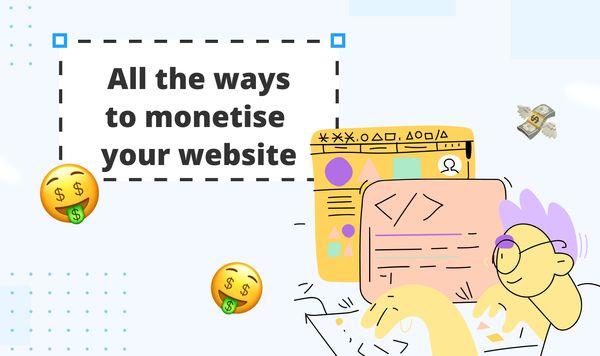5 reasons why your app needs a website
Creating a website might feel unnecessary for app owners who rely on app store listings to reach users. Many app owners mistakenly assume it’s unnecessary or overly complex to manage a website.
Since app stores provide a built-in marketplace, app developers conclude that’s all they need for visibility and downloads, because why bother, right? This perception is especially common for smaller teams or solo developers who are focused on creating and refining their app’s functionality rather than marketing.
However, relying solely on app stores can limit growth. A website opens doors to new users, stronger branding, and lasting engagement. In this article, we’ll explore what app owners might be missing out on by not having a website and how a simple site can make all the difference.
1. Lead generation: turn website visitors into Long-Term Users
Your website can become a powerful tool for lead generation. By adding features like newsletter sign-ups or exclusive content access, you can capture valuable user data—emails, feedback, and preferences. These insights allow you to keep users engaged over time, even outside the app.
Imagine launching a new feature or a special promotion. With a list of interested leads gathered from your website, you can send targeted emails to notify them directly. A website empowers you to build a community of loyal users before they even install the app.
2. Driving app downloads through your own channel
The recent Google Play vs. Epic Games lawsuit has stirred up the possibility of more flexibility in app distribution. Google may soon need to allow third-party app stores and alternative payment systems, which could free developers from the 30% commission that app stores often take. While these changes are still pending, having a website opens a new route for promoting and distributing your app independently.
For example, on your website, you can direct users to download your app without relying solely on app store visibility. This strategy can increase your app’s accessibility and help save on fees associated with traditional app store listings.
3. SEO and visibility: let users find you
A website can do wonders for discoverability, helping you reach users searching for solutions your app provides. Through effective SEO, your website can rank on Google for keywords related to your app’s functionality, such as “best budgeting app for students” or “simple photo editing app.”
An optimized website expands your reach, capturing users who may not find you through app stores. This SEO boost can significantly impact user acquisition, especially for apps in competitive niches.
4. User support and information hub
Your website can be a go-to resource for app users seeking support or learning more about your app’s features. Include an FAQ section, setup guides, or troubleshooting steps to enhance the user experience.
For example, a meditation app’s website might host articles on mindfulness or detailed guides for setting up custom sessions. Users can find answers to questions and discover new ways to interact with the app — all without leaving your site. By offering easy access to support resources, you help reduce frustration and improve user retention.
5. Credibility and trust
In a world where apps are a dime a dozen, a professional website helps build credibility. Users are more likely to download an app that has a trustworthy online presence, complete with testimonials, a brand story, and contact information.
For instance, an e-learning app might feature testimonials from successful students on its website, creating a sense of reliability and encouraging new users to try it. A website demonstrates your commitment to the app’s quality and to supporting your users, ultimately boosting confidence and conversions.
How to build a website for an app
Now, how do you build a website for an app? Well, the good news is that it has never been easier! With SpreadSimple, you can create a website in literally one evening — using an intuitive website editor and Google Sheets.
If you already have a Google Sheets document with all the data you want to show on your website, then you can just upload it to SpreadSimple. Otherwise, just use one of the pre-built templates and enter your data into an automatically generated Google spreadsheet.

- Use your Google account to sign in to SpreadSimple — it takes less than two minutes.
- Choose one of the templates and start using it.
- Customize the template: upload your logo and images to the main page, write your company name and description.
- Go to the automatically generated Google Sheets document and insert your data.
- Go back to the website editor, refresh the connection and publish your website.
As simple as that! Now, you have your website that is easily managed through Google Sheets and can be connected to numerous add-ons for payments, analytics, marketing, etc.
Final Thoughts
A website provides numerous opportunities to
- Generate leads and drive downloads,
- Bypass stores’ commissions,
- Connect with users,
- Establish your app as a credible, trustworthy product
If you’re looking to amplify your app’s success, consider these five reasons to start building a website today and also look into ways to enhance your team's communication. It’s an investment that doesn’t have to be hard, pricey, or time consuming. With Spread Simple, it’s extremely easy to create a website when you already have an app.



